
ONE of the most common bird sounds of the African forests, is the chorus of calls, often not bird-like, produced by turacos. The green turacos (Tauraco species) vary mainly in the colour of their crests, eye stripes, spots and coloured orbital skin, which are said to aid camouflage in resembling areas of sunlight that penetrate the forest foliage. Although the typical turacos are apple green, there is much variety among the 23 species.
The two species of go-away birds (so-called because of their laughter-like call), and the western grey and eastern grey plantain-eaters lack the colours of the closely related true turacos and inhabit dry open areas, and their calls are not as powerful as those of the forest turacos. All turacos were once referred to as plantain-eaters, yet in fact none feed on plantain, a fruit-bearing plant similar to banana.
The western plantain-eater (Crinifer piscator) occupying West Africa, has a distribution four or five times larger than its eastern counterpart. It occurs from Mauritania through Nigeria and then east to the Central African Republic. There is also a small isolated population 200 miles to the south in the Congo. The much smaller range of the eastern plantaineater (C. zonurus) has become fragmented into three or four areas in the past 50 years, and it now occurs in various eastern countries including Ethiopia, Sudan, Uganda and Kenya. There is a slight overlap in the range of both species in central Africa but, although they are similar in habits and appearance (the eastern species has a shorter crest and a white band across the tail feathers), there is no evidence of hybridisation. (Some species of turacos have hybridised in captivity – obviously, not something to be encouraged.) Grey plantain-eaters are the size of a wood pigeon, with an additional 9in (23cm) tail.
Denne historien er fra November 06, 2019-utgaven av Cage & Aviary Birds.
Start din 7-dagers gratis prøveperiode på Magzter GOLD for å få tilgang til tusenvis av utvalgte premiumhistorier og 9000+ magasiner og aviser.
Allerede abonnent ? Logg på
Denne historien er fra November 06, 2019-utgaven av Cage & Aviary Birds.
Start din 7-dagers gratis prøveperiode på Magzter GOLD for å få tilgang til tusenvis av utvalgte premiumhistorier og 9000+ magasiner og aviser.
Allerede abonnent? Logg på
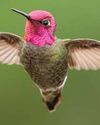
The World's Best-Known Hummingbird?
Intensively studied, the gem-like Anna’s hummingbird is a welcome visitor to the gardens of America’s most populous state: California. Bill Naylor investigates its life history
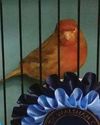
The charm of the English Cinnamon
Despite its long and complicated history, the true Cinnamon canary is still with us – in the hands of a tiny group of breeders. DONALD SKINNER-REID reckons it deserves wider appreciation
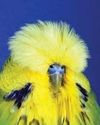
Spangles: a personal overview
FRED WRIGHT relates a budgie story of over-exploitation, consequent problems and abundant potential for the future

New converts to old breeds
Old and rare canaries have a reputation for adding fresh interest and challenge to the hobby. PETE HOOK and NICK JOY agree, and explain the birds’ charm to Dave Brown

Themed aviaries are a hit with the public at annual Stafford show
DECORATIVE AVIARY DISPLAYS from a CBS and an online bird keeping advice group were voted in the top three by visitors for the inaugural Stafford Aviary Competition.
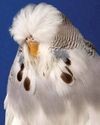
Pieds with potential
More than just a lesser variety, the dominant pied will introduce challenge and change into most studs, reckons CLIVE WAKEMAN. Here he discusses pairings to try and others to avoid

Club News
Welcome to the club and show pages – the bit that’s all about you Results: convention, specialist & rare and Breeder of the Year

Canaries Month by Month:
With Christmas around the corner, BRIAN KEENAN is well into his winter programme, and reckons he might deserve a nice outcross
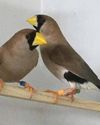
Smart Choice, Docile Nature
Dave Brown welcomes the masked grassfinch to his birdroom and shares advice on this lovely Australian species
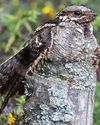
The truth about the ‘flying toad'
Odd local names and weird superstitions can’t hide the beauty and elegance of the nightjar, a species that has made a fascinating subject in a few zoo collections, reveals BILL NAYLOR